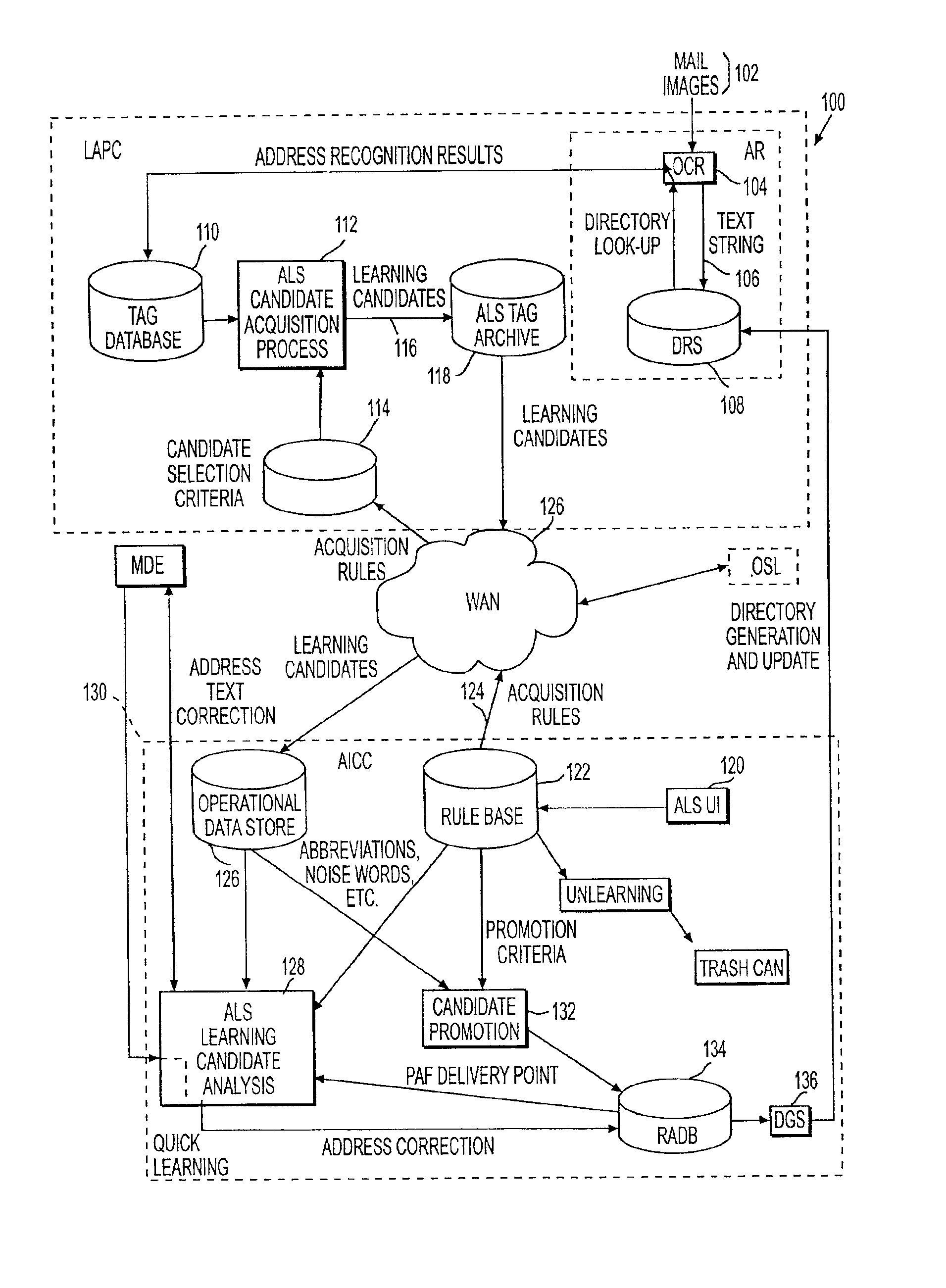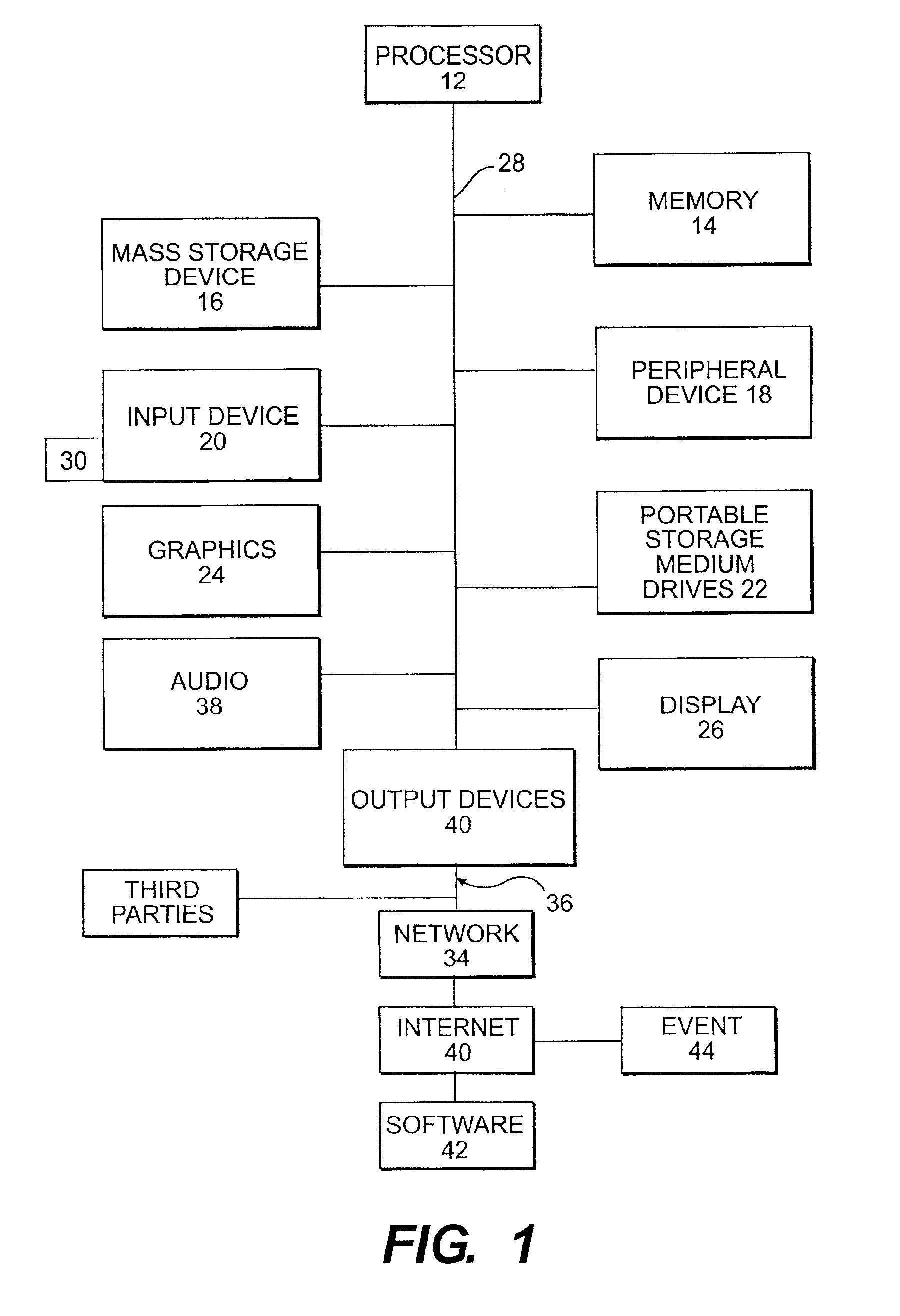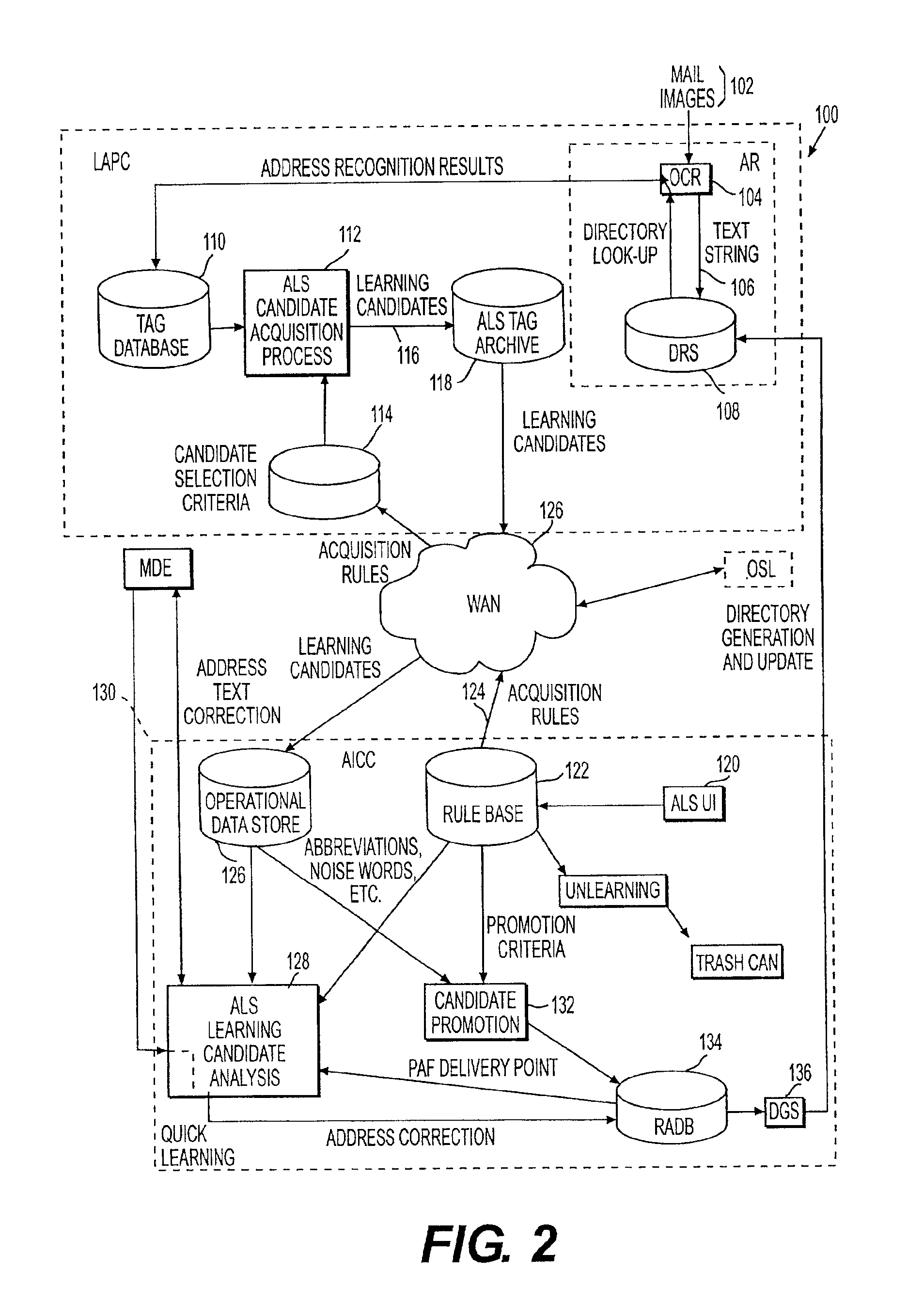Address learning system and method for using same
a learning system and address technology, applied in the field of computerized systems, can solve the problems of unrecognized information, unmatched information, and inability to identify achieve the effect of identifying the intended recipient of the mail piece, and avoiding the use of unmatched information
- Summary
- Abstract
- Description
- Claims
- Application Information
AI Technical Summary
Benefits of technology
Problems solved by technology
Method used
Image
Examples
case 1
[0116]Candidate Promotion, Case 1
[0117]The ALS Candidate Analysis process must check the RADB to see if there is data that already exists for this unmatched address.
[0118]If “James Johnson and Smith” is in the RADB, then is “James and Co” the same company? This is where string matching is important. If they are indeed the same then either can be fully resolved and a new alias can be learned for “James Johnson and Smith” otherwise a new delivery point must be suggested for “James and Co”. If on a subsequent mail piece “James and Co” is seen with the same building number as “James Johnson and Smith” then they are the same and no new delivery point is necessary. In this way, a new word entered into the ODS as a new delivery point can become an alias for an existing delivery point before promotion to the RADB. After the ALS sees many examples, maybe it will become clearer. This is another example why address learning must occur over a period of time.
case 2
[0119]Candidate Promotion, Case 2
[0120]In the example shown, we can ideally spot that it is an alias. However, the word should still be considered for learning because if the AR system cannot match “Smith” to “Smithe” it obviously needs a “Smithe” entry or no matching will ever happen on this spelling.
case 3
[0121]Candidate Promotion, Case 3
[0122]We cannot assume that because there is a “Smith” at “72”, this personal alias must be for street number “72”. There might be a different Mr Smith at street number “12”. If this is just an OCR misread, hopefully the unmatched string will not happen enough to be promoted.
[0123]There are some interesting cases for unmatched strings that Bell & Howell will include as part of optional research effort for the Prime System Integrator. For instance, the string below presents a complex issue:
[0124]Johnson Ltd.
[0125]1 London Rd
[0126]If in fact this address should be “1 Main Rd” since the premises are on the corner of London Rd and Main Rd. The ARS might resolve to “1 London Road” and pass “Johnson Ltd.” as unmatched text. The ALS Candidate Analysis process should find “Johnson Ltd.” nearby and then learn “1 London Rd” as a Thoroughfare name alias for this delivery point rather than create a new company at 1 London Road.
[0127]Direct Learning Input
[0128]Th...
PUM
 Login to View More
Login to View More Abstract
Description
Claims
Application Information
 Login to View More
Login to View More - R&D
- Intellectual Property
- Life Sciences
- Materials
- Tech Scout
- Unparalleled Data Quality
- Higher Quality Content
- 60% Fewer Hallucinations
Browse by: Latest US Patents, China's latest patents, Technical Efficacy Thesaurus, Application Domain, Technology Topic, Popular Technical Reports.
© 2025 PatSnap. All rights reserved.Legal|Privacy policy|Modern Slavery Act Transparency Statement|Sitemap|About US| Contact US: help@patsnap.com



